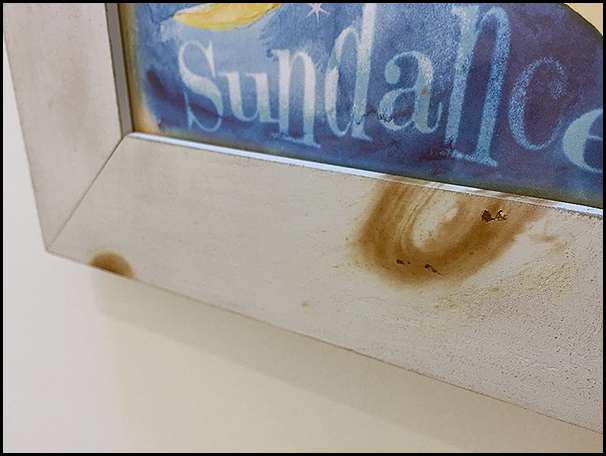
I have a 3-in.-thick slab of pine that was milled at least 15 years ago and has been in my workshop for the past 10 years. I’m sanding it to prepare it for use as a coffee table top. It is still oozing a little of what I believe to be sap. I’ve scraped off all that I can, and when I sand the sappy area you can see it turn dark on the slab and it builds up on the sandpaper. How should I seal it before applying finish? I plan to use spar urethane as a topcoat. – Granville Jones
Michael Dresdner: Trying to seal liquid sap is an exercise in futility. I’ve seen sap make its way through just about every clear finish, thick paint (you can see an example of that in the above photo) and even vinyl “contact paper” drawer liners. There is a way to “set” the sap by heating the wood past the point where sap crystalizes, but it’s probably not practical on your thick pine slab. The traditional material for sealing sappy knots is called “knotting” and is made of thick shellac. It works moderately well for a little while, but ultimately it fails. Your intended solution — spar urethane (a misnomer, by the way) — is probably exterior urethane. While it would undoubtedly cure over the sap pockets, do you really want active, oozing sap under your cured finish? That can’t end well. Personally, I would consider using something else for a coffee table top. After all, even the best finish has its limitations.
Tim Inman: That board is not ready for “furniture time” yet. Oozing sap is liquid. You can seal it in with almost anything, but it is still in there like lava in the bottom of the volcano boiling and brewing, waiting for a chance to erupt. Michael has it exactly right! One of my old wood technology teachers liked to say, “One year per inch of thickness for natural drying, squared!” So, for a 3-in.-thick slab, he would view nine years as the MINIMUM time for natural air drying before it’s ready for furniture use — minimum! We’re being negative here, but we’re also wanting to save you heartbreak over a nice project gone gooey and sticky. (You might guess how we know this … do as we say, not as we have done ourselves.)





